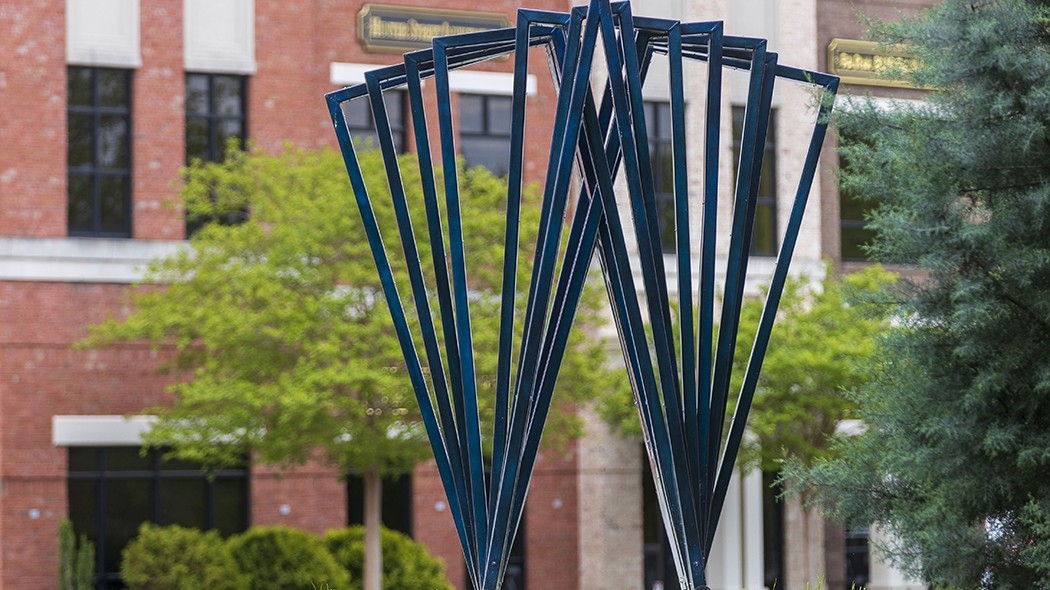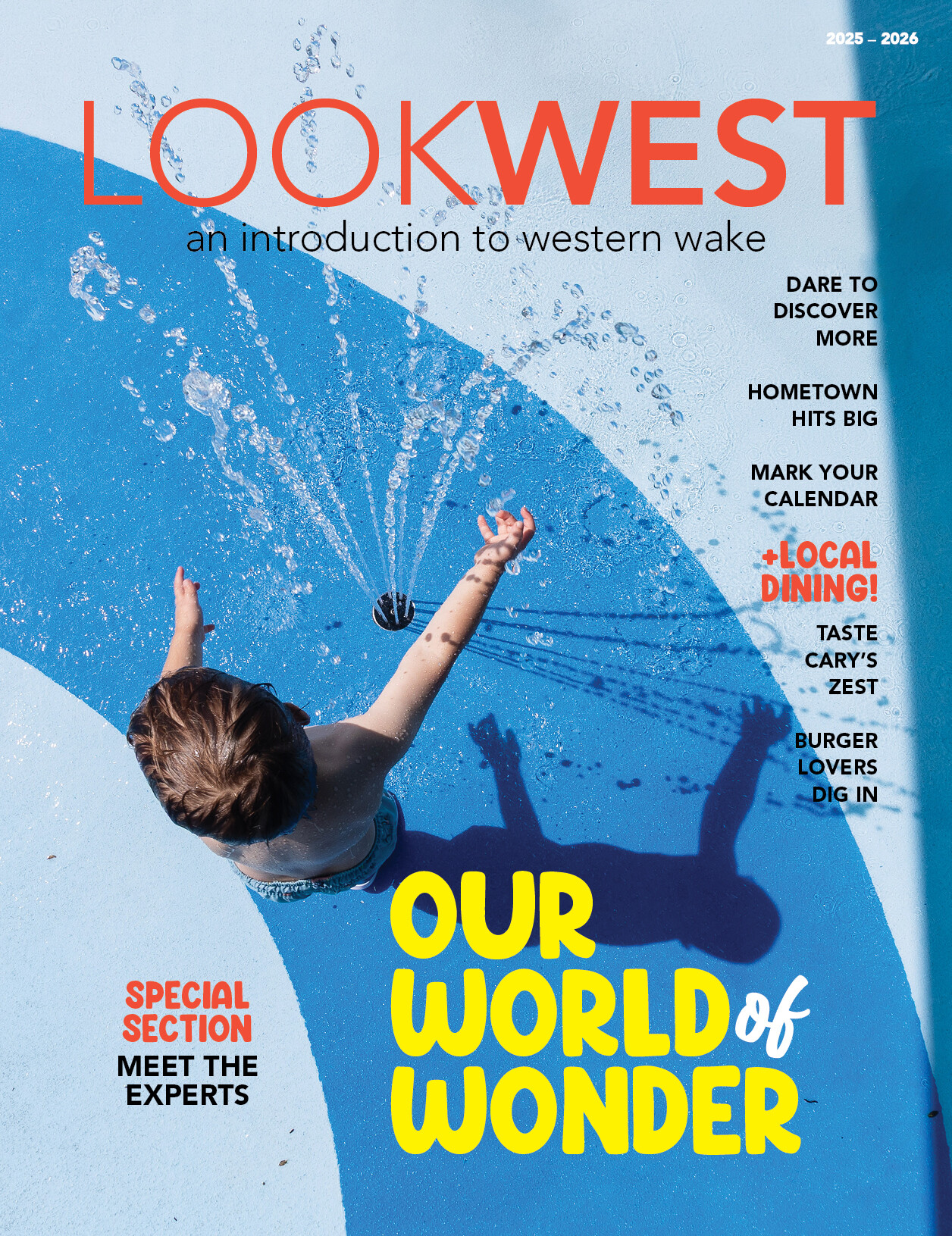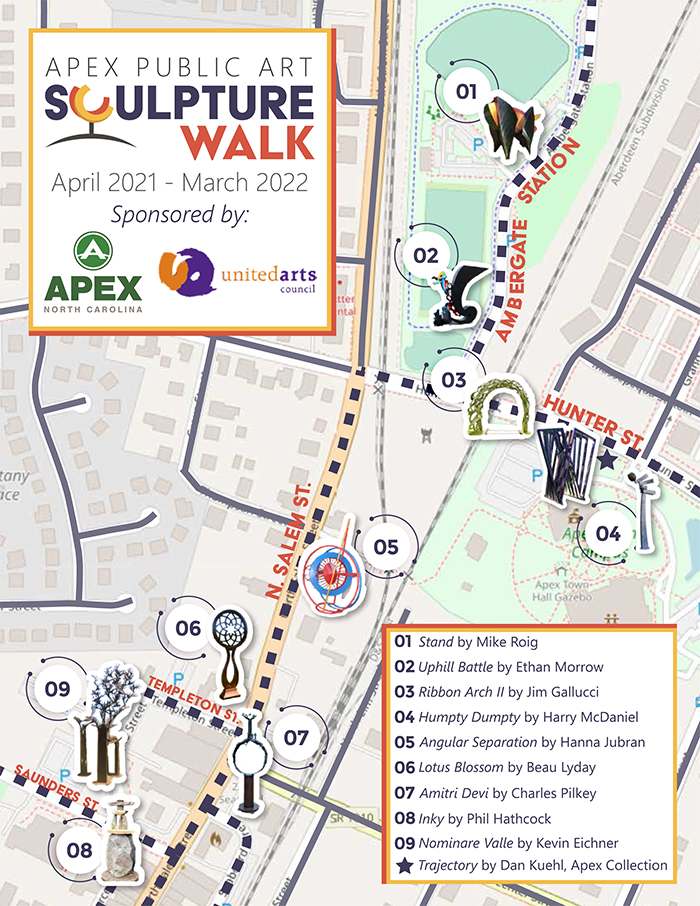
Stroll through downtown Apex days, and you’ll likely notice something different.
Nine sculptures are on display from Hunter Street Park to downtown Apex in the town’s first public outdoor art walk. The pieces were installed in April and will remain in place until March 2022.
“A temporary exhibit was something that was kind of new to me,” said Tom Colwell, chair of the Apex Public Art Committee. “It seemed like a really good way to put a lot of art in public space for a smaller commitment and give people an opportunity to get used to seeing different pieces of artwork in the community.”
The committee received over 35 submissions from all over the United States, but the nine selected works were all created by North Carolina artists — from Phil Hathcock of Cary to Harry McDaniel of Asheville.
“It wasn’t necessarily by design, but it worked out that way,” Colwell said. “We’re pretty excited about that too, just thinking that it’s a cool way to support more local and regional people as well.”
When putting together the show, the selection team considered artistic merit as well as variety of styles and materials, says Jeffrey York, the juror for the exhibition.
“There are pieces that deal with the natural world. There are some pieces that are just geometric, and the artist is interested only in those sort of formal qualities. There are other pieces that try to make some kind of a statement; they’re pieces that connect to other cultures,” he said.
“As a juror, that’s one of the things that these kinds of shows should be — more varied than perhaps a thematic kind of exhibition.”
The idea for the Sculpture Walk was first floated about five years ago, even before there was a public art committee, to illustrate the kinds of projects that might be possible. In November 2017, the committee came together and began working on several projects.
Residents were surveyed at festivals and other public events, revealing a tremendous interest in public art. It was seen as a way to boost community pride, says Renee Anderson, cultural arts program specialist with the town.
“One of the goals of the whole public art program is to enhance the quality of life in Apex and to show that the town is willing to invest in the community,” she said. “It also shows that we’re a destination.”
The Apex Sculpture Walk is seen as a way to attract out-of-town visitors and to encourage residents to stroll from Hunter Street Park, through the town campus, to the historic downtown, says Colwell, who has served on the Parks, Recreation and Cultural Resources Advisory Commission for more than a decade.
“The idea was to encourage that fit and active lifestyle, to be outdoors, enjoy some interesting and beautiful pieces of artwork, and then also to help stitch together a couple of areas that are really close by each other,” Colwell said.
The public is invited to select their favorite and vote for a People’s Choice Award using the free Otocast app. Otocast also provides artist-narrated stories and additional details about each sculpture in the walk. For details, visit apexnc.org/1558/Public-Art
Begin at Hunter Street Park
1. Stand
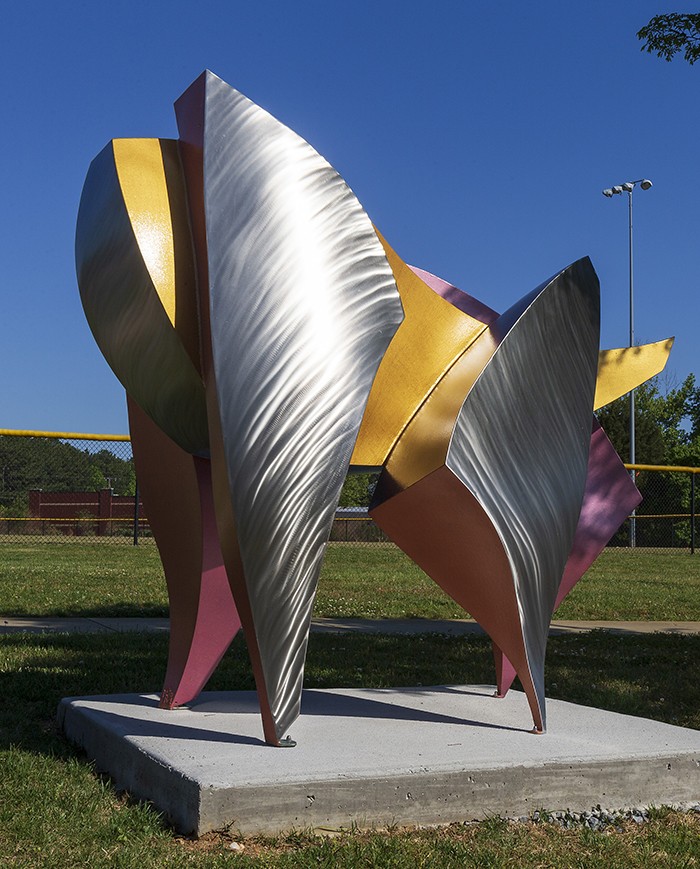
Carrboro artist Mike Roig describes himself as a sculptor of metal and motion. While many of his kinetic sculptures catch the wind, changing with each breeze, this sculpture is solid and steadfast. The piece is “not representative of any actual animal, yet suggestive of any number of creatures,” Roig says.
2. Uphill Battle
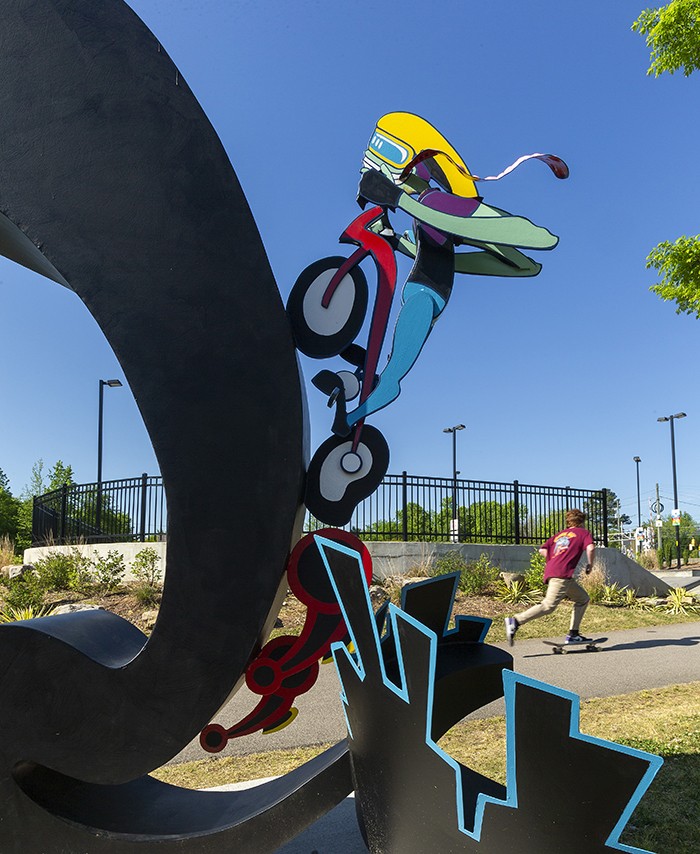
Ethan Morrow, of Durham, created this piece for the Hattiesburg, Miss., Alliance for Public Art. The vibrantly dressed cyclist climbing a nearly vertical road symbolizes the adversity we all face and the grit it takes to triumph, he says.
3. Ribbon Arch II
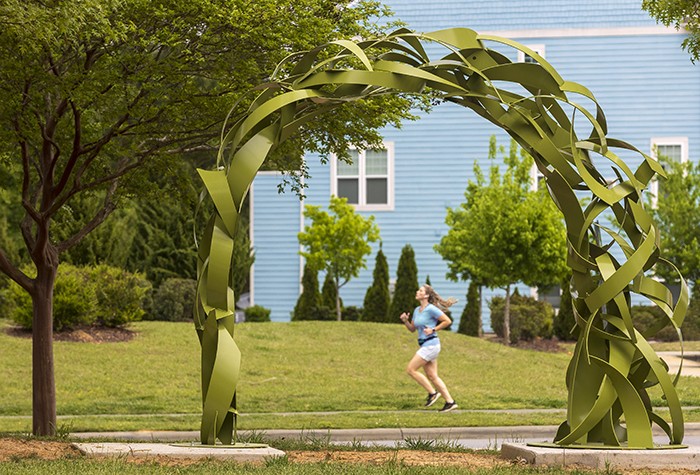
Greensboro artist Jim Gallucci built this sculpture to celebrate the ecology of the Earth. The piece “reminds us that all things are connected in life and in this world,” he says.
4. Humpty Dumpty
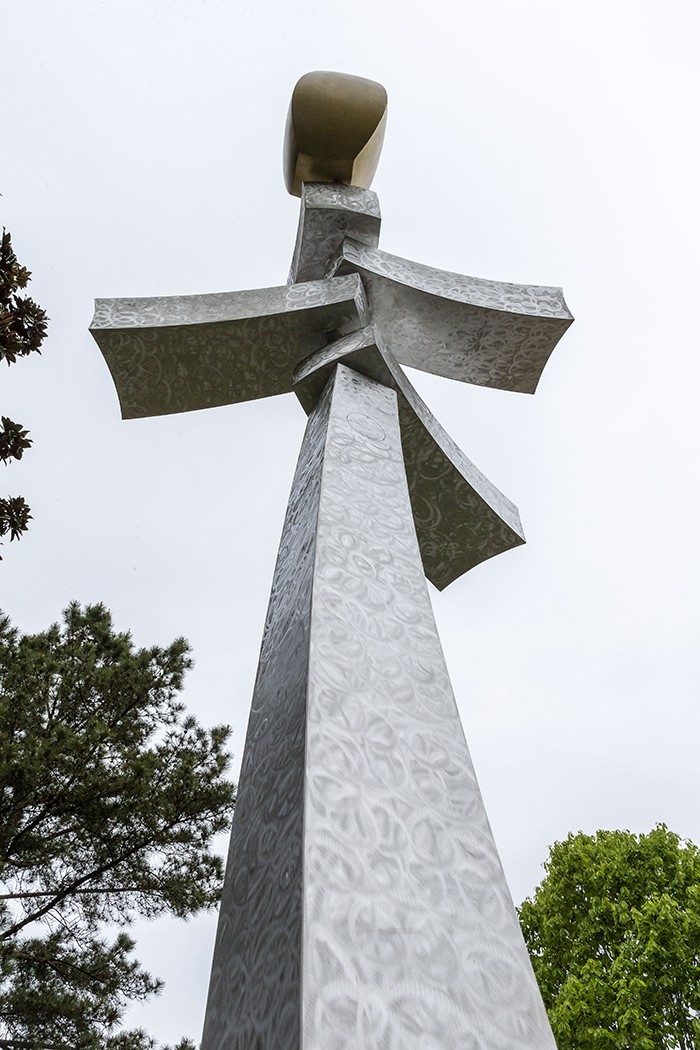
Harry McDaniel, of Asheville, invites viewers to experience the motion of the wind and the ever-changing display of his kinetic sculpture. Inspired by the children’s nursery rhyme, the golden egg is perched precariously atop an unsteady wall.
5. Angular Separation
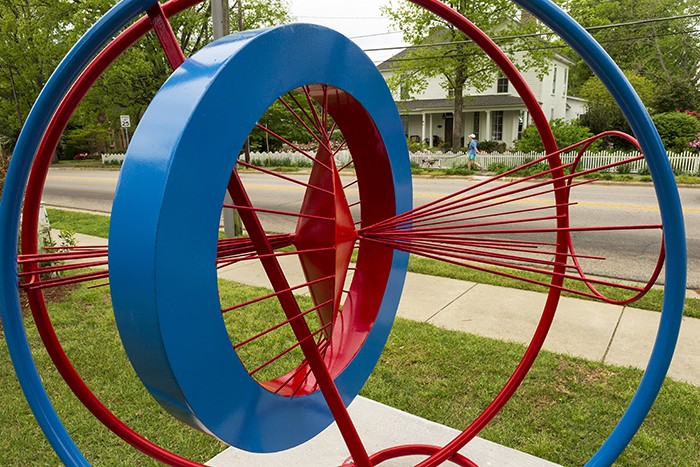
Hanna Jubran, of Grimesland, uses circular forms and diagonal lines to evoke the concepts of time, movement, balance and space.
6. Lotus Blossom
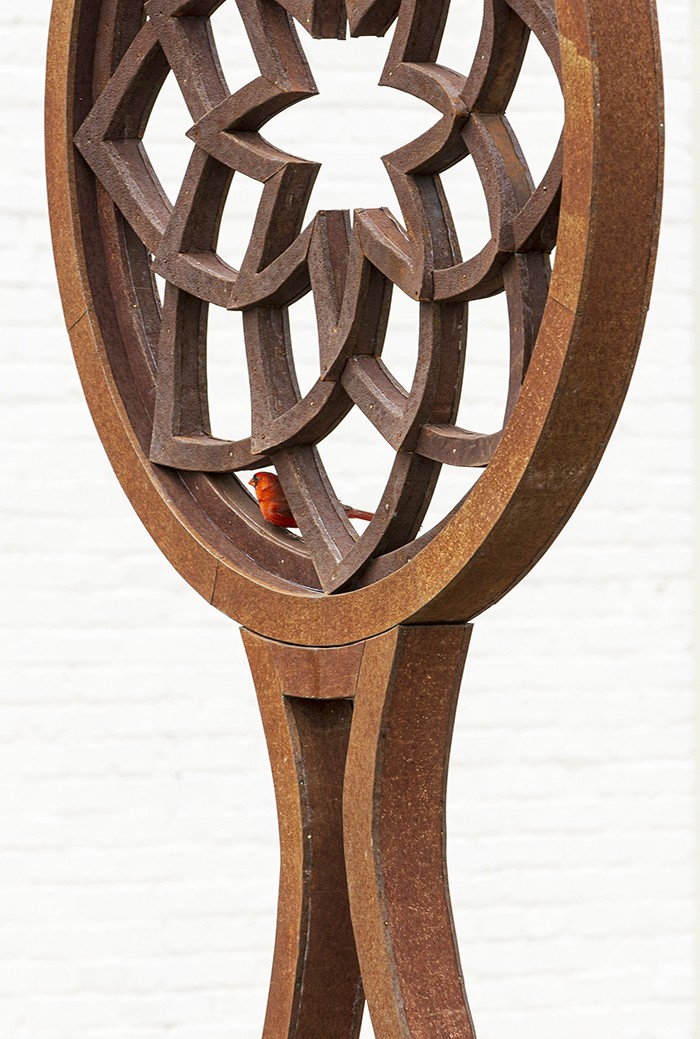
Beau Lyday, of Valdese, places the symbol of enlightenment, rebirth and renewal at the center of his sculpture, which is made from “revalued” construction materials. “A work can mesmerize a person, moving one to a place of safety or sanctuary and instilling a sense of peace,” Lyday writes.
7. Amitri Devi
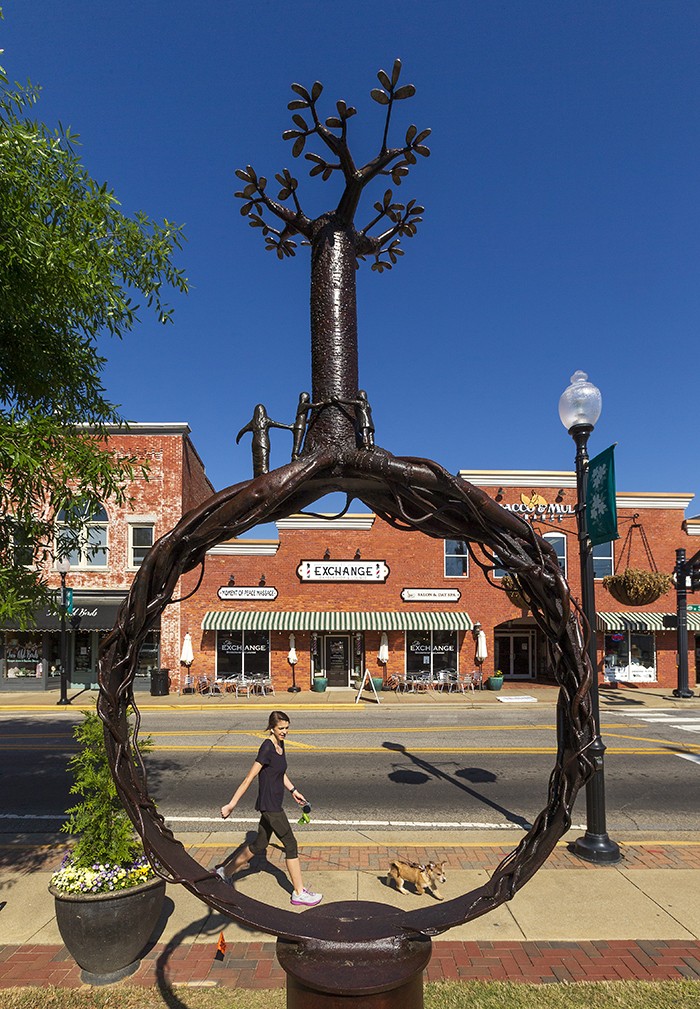
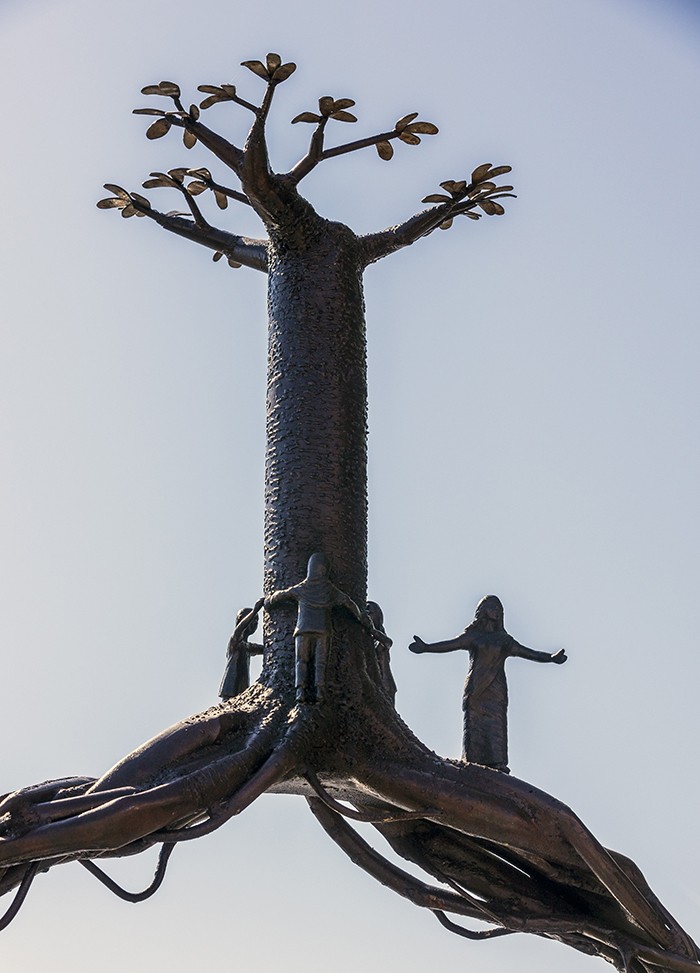
Charles Pilkey, of Mint Hill, was inspired by the legendary Indian hero Amitri Devi, who sacrificed her life nearly 280 years ago in order to protect a forest from being cut down. Her bravery inspires environmentalists today, Pilkey says, and “we must all do what we can to preserve our forests.”
8. Inky
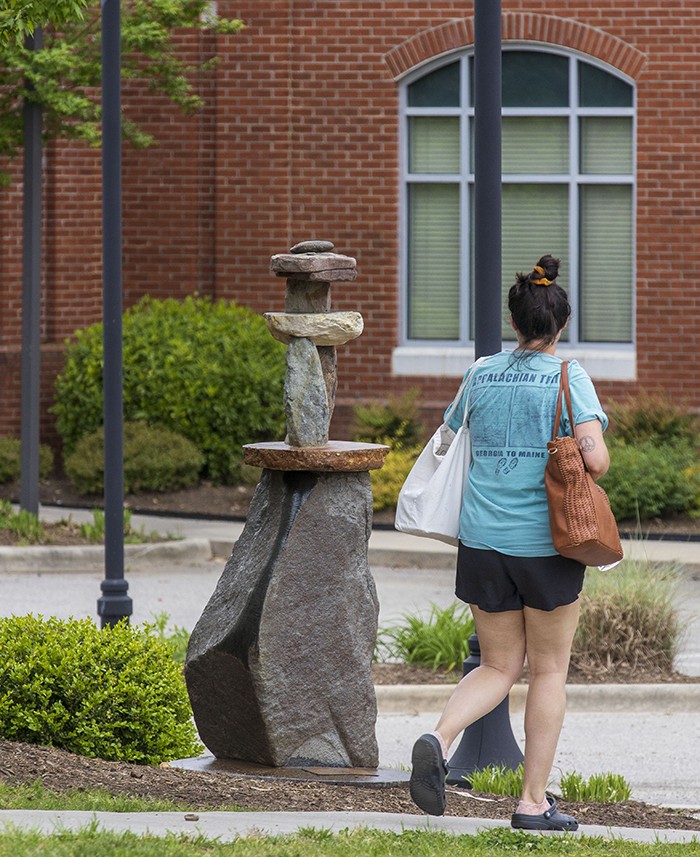
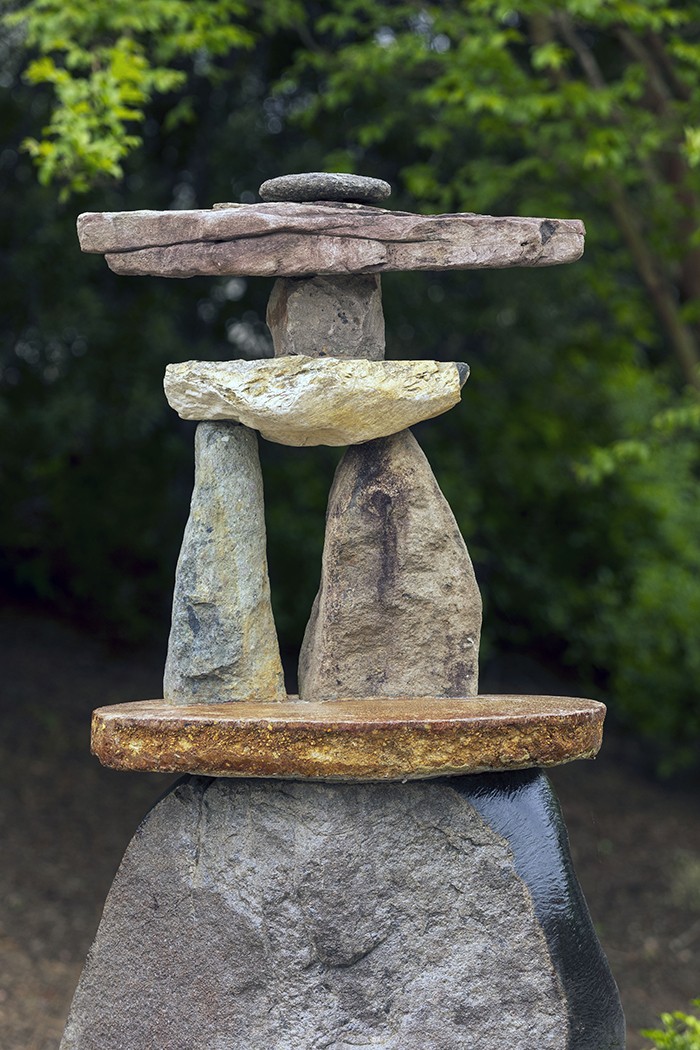
Cary sculptor Phil Hathcock created this stacked stone assemblage to resemble a cairn, used as directional markers since prehistoric times. Hathcock’s love of nature and stone informs his art and his business, Natural Stone Sculptures, a landscaping firm that specializes in Japanese-style gardens. “It’s pretty much a life of art and nature,” Hathcock says.
9. Nominare Valle
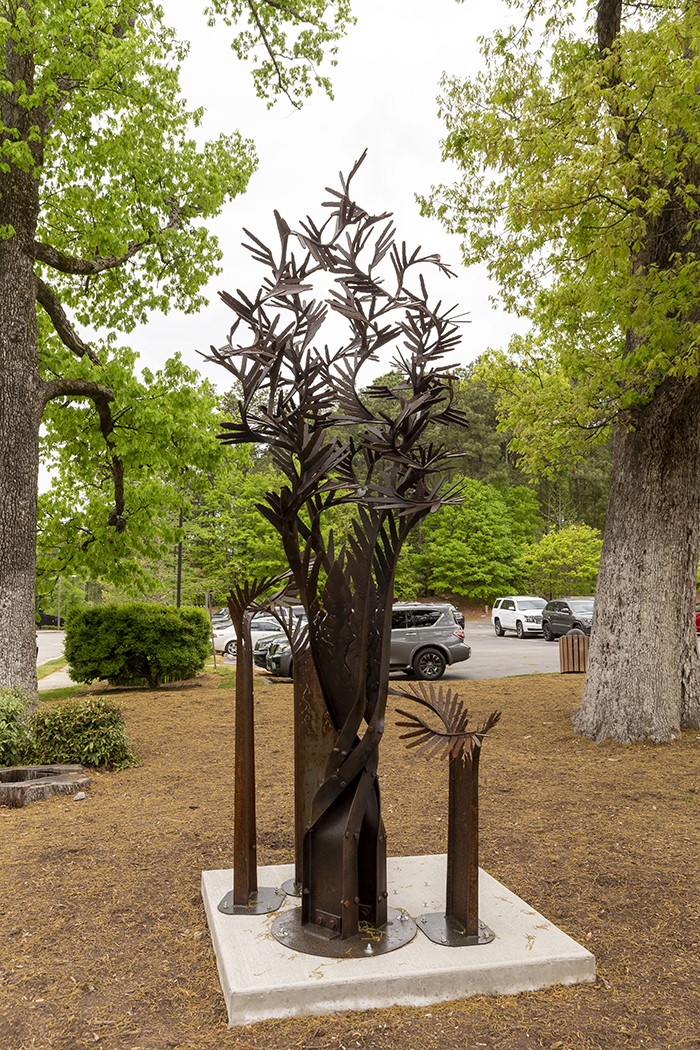
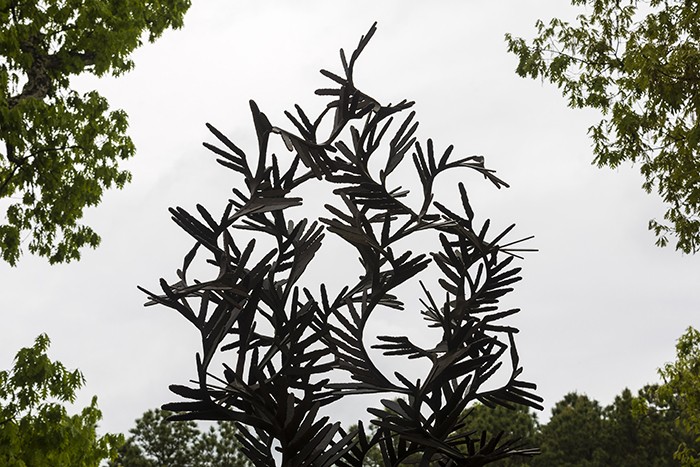
Kevin Eichner, of Moncure, was inspired by nature to create these steel tree-like structures. “I’m trying to take these stiff, rigid, industrial beams, that bridges and skyscrapers are made of, and breathe new life into them,” he says.
10. Trajectory by Dan Kuehl
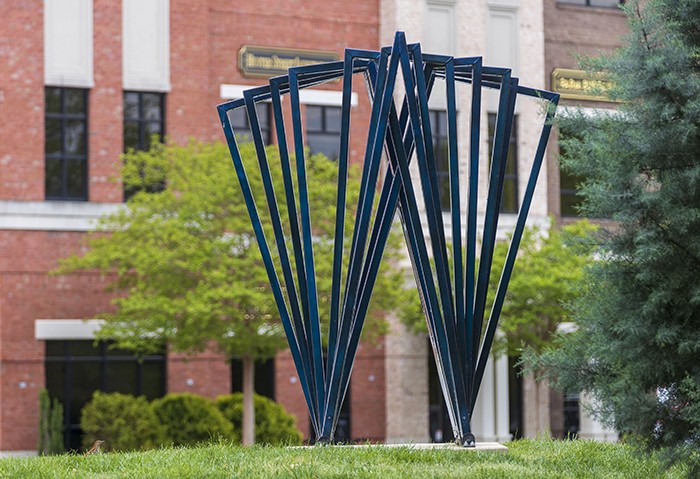
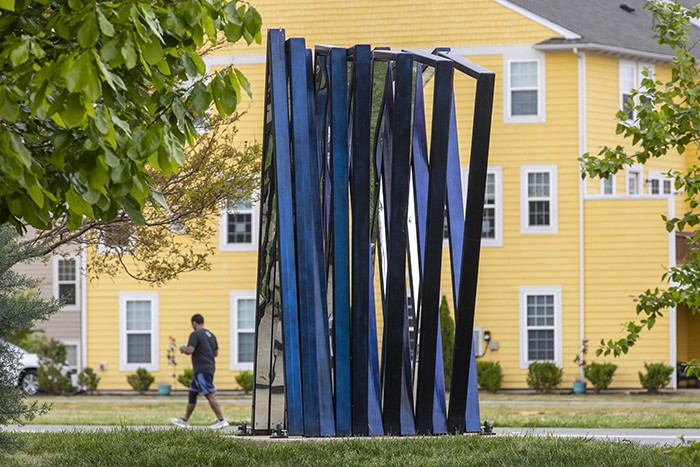
Acquired by the town in 2019, the sculpture is installed on the Apex Town Hall campus, at 73 Hunter St.
Trajectory is made of beams of steel rising toward each other, connecting at the top. As the taller beams meet with the shorter ones, they create angles. The angles follow a spiraling arch trajectory. The open space inside the angles is faced with mirrors, reflecting some space outside, but mostly the space inside. The path through the sculpture becomes an intertwined comingling of lines. Trajectory is about interconnectivity and progression along a curvilinear route.
- Meet Erin O’Loughlin
- Meet Andy Munn
- Meet Marsha McLean
- Meet Hillary Parnell
- Meet Matthew Poling
- Meet Tim McLoughlin
- Meet Calin Riley
- Meet Victoria Ford
- Meet Brianna Williams
- Meet Erin Bircher
- Bring the Magic
- Meet Evan Bost
- Meet the 2021 Movers & Shakers
- A Peek at the Peak City
- Meet Amy Davenport
- Meet Stephen Rhodes
- Meet Nicole Case
- Meet Camille Kauer
- Meet Alicia Jurado
- Meet Virginia H. Johnson
- Meet Sylvia Inks
- Meet Dr. April Gessner Deddens
- Meet Jasmine Brown
- Meet Mycal Brickhouse
- Meet Matthew Bettinger
- Meet Shane Barry
- ‘It just had everything’
- Small Business Spotlight: Blue Diamond Gemstone Panning
- Riding to Victory
- Nonprofit Spotlight: Spirit League of North Carolina
- Restaurant Profile: Keen on Korean
- Liquid Assets: Wen-da-Hell Hefeweizen from Bearded Bee Brewing
- Liquid Assets: Frozen Lavender Lemonade from Andia’s Homemade Ice Cream
- Garden Adventurer: ‘Millenium’ Allium is More Than a Spellcheck



